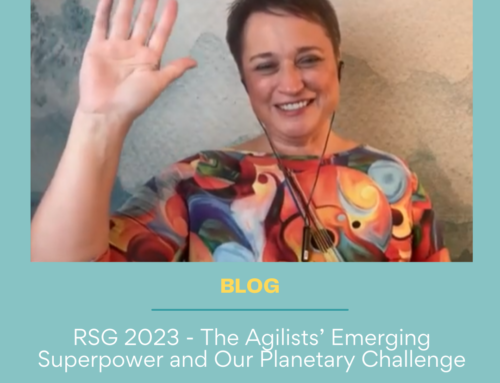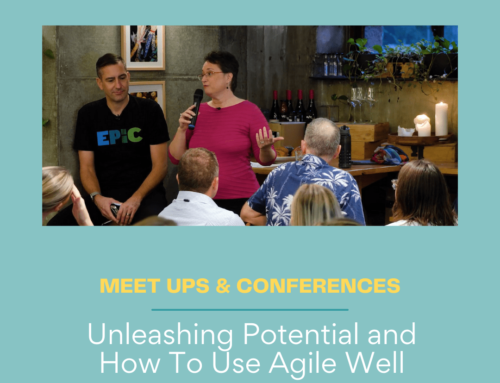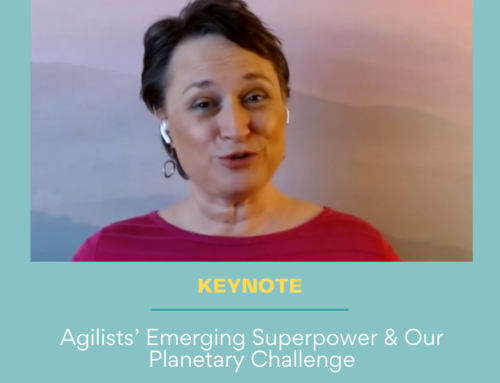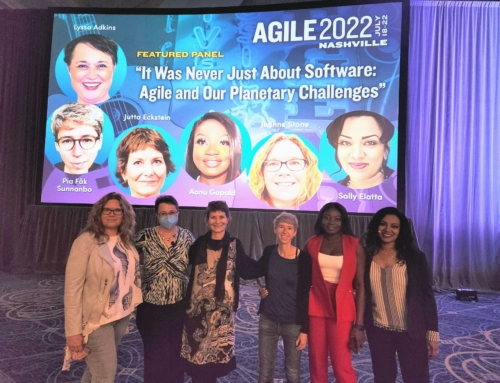LYSSA ADKINSAUGUST 30, 2009
Tobias Mayer and I gave a session at Agile 2009 in the last time slot of the last day entitled Human-Centric Coaching. It had been a long, exciting, skills-filled, exhausting conference. We noticed that people were walking around either filled up or fed up. Overloaded. So, we slowed it down. We gave the session a bit of breathing room. We allowed silence, we let people talk in their own time, we spoke deliberately. We taught without zooming from one idea to the next in an effort to cram more in to already over-full brains and hearts. Instead, we noticed what was happening and we changed our approach. We were being the best kind of agile coaches and mentors, allowing our agenda to be fluid to the needs of those who came to learn from us. You might think that we got nothing done. On the contrary, we got everything we planned done. Completely. Spacious conversations have less talk in them, surely, but often deeper content. So it was in this case.
Part one of the session taught Powerful Questions: what one is, how to notice your non-powerful questions, what powerful questions you might start using instead.
More resources on Powerful Questions:
Co-Active Coaching: New Skills for Coaching People Toward Success in Work and Life
Art of Powerful Questions from World Cafe
Tobias then led the group in an improv game that perfectly bridged the learning from Powerful Questions to the topic coming up next, Powerful Requests. This is one thing I enjoy about Tobias: he learns a new thing and immediately sees the core of it – the deepest part of it – clearly. He then mashes-up improv and agile to convey that core to his learners in physical and emotional ways they are not likely to forget.
Part two of the session focused on Powerful Requests. I first learned Powerful Requests from The Coaches Training Institute and have found them to be immensely useful for myself and the people I coach. To make a Powerful Request:
- Stay connected to what you care about. Don’t let superfluous details cloud the request and as you lead in to the request, keep what you care about firmly in mind.
- Be truly open to yes, no or counter offer. If you cannot stomach a no or counter offer, you’re not making a request, you are delivering a demand.
- Make the lead-in short. No sob stories, no long explanations. Big wind-ups often transfer your emotional burden on the person of your request intentions. That’s compulsion, not a powerful request. So, state just enough to give context for the request and then say…
- “Will you…” This is the power of a powerful request. Simply, “Will you refund me the room rate?” “Will you take out the trash?” “Will you help me understand what you really need?” “Will you meet with me today to finish the marketing brochure?”
That’s it. Simple, and effective.
Plus, the skill of saying no when you mean it. Saying no is harder than you might think. Just get a group of people in a circle and have one person turn to the next and ask, “May I borrow $100.” All the person says in return is, “No” and then turns to the next person and says, “May I borrow $100.” And so on, all around the circle. Question. No. Question. No. At the end, ask how people felt when they said no. Someone is sure to say something like guilty, shameful, mean. And then you’ll probably see other people’s heads nod. We are conditioned to feel bad when we say no, even in a contrived situation like this where no one expects anyone to say yes. It’s the legacy of a lifetime of non-powerful requests that were really demands.
As you try out powerful requests, you might be surprised to discover how many times you make non-powerful requests. How many times you get excuses instead of a straight-out yes, no or counter offer. How many times people say yes when they really mean no, and then don’t follow-through. Look around: How many times to people on your teams say yes when they really mean no? How much passive-aggressive behavior do you see? How many times do you demand (perhaps even nicely) instead of request?
Give these two a go. They’re power houses.






